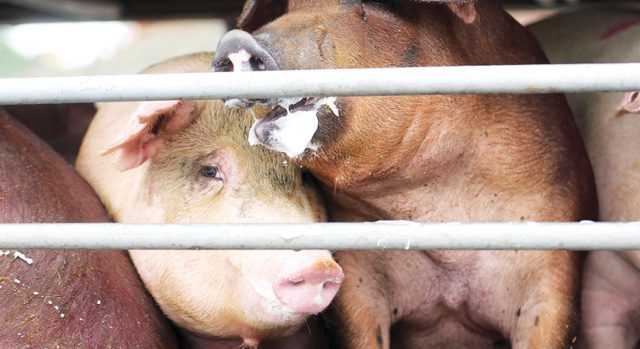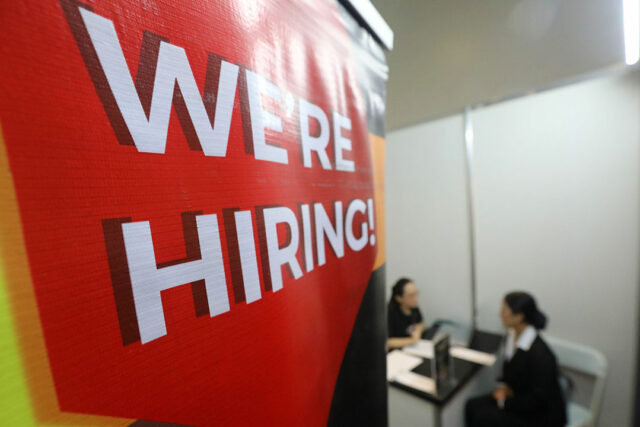By Justine Irish D. Tabile and Kyle Aristophere T. Atienza, Reporters
PRESIDENT Ferdinand R. Marcos, Jr. should identify barriers to business operations, develop an infrastructure master plan, enact a comprehensive investment bill and digitize local government services to generate more investments and jobs, according to the Philippine Chamber of Commerce and Industry (PCCI).
In an 11-page document detailing action plans for the government, the PCCI also urged the state to boost food security by increasing farm output and enhancing market access, as well as reform the education system, enhance workforce skills and improve healthcare to develop human resources.
The business group released the wish list on the last day of the 50th Philippine Business Conference & Expo in Pasay City near the Philippine capital.
“We propose improving doing business in the country by enhancing infrastructure, transportation, and logistics support and to create a conducive environment for investment generation and job generation,” it said.
The PCCI asked the Marcos government to form a consultation body composed of private sector leaders and policy makers to identify business barriers and fix conflicting administrative and regulatory functions of agencies.
It cited as an example the conflicting functions of the Philippine Ports Authority and Laguna Lake Development Authority.
The PCCI also sought a “comprehensive investment bill” that will outline the incentives of export- and domestic-oriented enterprises, adding that a task force should be created to monitor the compliance and effectiveness of the incentives.
In particular, the group asked for tax incentives and grants for renewable energy (RE) and waste management projects.
The business group also sought the creation of a long-term infrastructure master plan for transportation, energy and communication networks.
It said that the government should prioritize investment in farm-to-market roads and major transportation hubs to help facilitate the movement of goods regionally.
The PCCI also proposed the establishment of a “Digital Governance Initiative” that will provide technical assistance and tools and implement training programs for local governments.
It cited the need to set up a national task force focused on streamlining business processes through digital platforms.
FOOD SECURITY
The PCCI likewise asked the government to help local producers in navigating export regulations and market access opportunities and protect consumers from extra costs as the country transitions to RE.
“We call for a multifaceted approach to enhance food security that prioritizes increasing agricultural production, enhancing market access, and ensuring a stable and affordable food supply for all Filipinos,” the PCCI said.
To achieve food security, the business group sought the establishment of a technology task force consisting of representatives from the Department of Science and Technology, Department of Agriculture, agricultural experts and technology companies.
The PCCI said the task force should identify and deploy modern farming technologies such as climate control systems, precision farming tools, climate-resilient crop varieties and internet of things (IoT) solutions for monitoring conditions in real-time.
The Marcos government should identify specific recovery strategies for the coconut, hog and aquaculture industries and develop a financial aid program for disease control measures and new technologies, it added.
Also on the wish list is increased budgetary support for agricultural cooperatives and investments in logistics infrastructure including modern warehouses, distribution centers and cold-chain facilities.
The PCCI further reiterated its call for changes to the Agrarian Reform law to increase the land retention limit from five to 24 hectares and remove the ceiling on agricultural land ownership. This was also included in the group’s policy recommendations last year.
“We urge the government to reform the education system, enhance workforce skills through upskilling and reskilling initiatives, and improve the healthcare system to foster a productive population,” the PCCI said.
It cited the need to amend the Philippine Qualifications Framework law with a focus on establishing a Philippine Qualifications Authority.
It said that there is a need to conduct consultations to ensure the alignment of education outcomes with labor market needs and benchmark the law against the qualification frameworks of members of the Association of Southeast Asian Nations (ASEAN)
The group also called for the establishment of research and development centers that will develop new products, research industry trends, benchmark practices and maintain updated curricula.
On healthcare and malnutrition intervention, the PCCI said the government should prioritize the construction of level 3 and 4 facilities in underserved regions and initiate community-wide campaigns against malnutrition.
“These resolutions represent the collective voice and aspirations of the business sector, reaffirming our serious commitment to collaborate with the government in realizing a progressive, sustainable and inclusive economy,” PCCI President Enunina V. Mangio said in a speech at the business conference on Oct. 23.
‘NEW PATHWAYS’
Meanwhile, strategic investments since the launch of green lanes in February 2023 has hit more than P4 trillion, the Marcos government said, as it vowed to pursue skill development for the Filipino workforce amid a growing digital shift.
“We now have… 162 projects valued at nearly P4.4 trillion endorsed for green lane services,” Mr. Marcos said in a speech read by his Special Adviser on Economic Affairs Frederick D. Go on the last day of the PCCI event.
The green lanes seek to accelerate the issuance of permits and licenses for approved strategic investments.
Mr. Marcos said more than 800 local governments are implementing a one-stop shop platform for local government services such as business permit licensing, local civil registration and the issuance of building permits.
He also cited an executive order he issued in 2023 to streamline the processing of permits for the construction of information and communications technology infrastructure.
The Philippine economy grew by 6.3% in the second quarter, “making the Philippines one of Asia’s best-performing major emerging economies,” the President said.
He also cited gains against inflation, which hit 1.9% in September, the lowest since May 2020. Easing inflation has given the central bank room to ease monetary policy, delivering a 25-basis-point rate cut for a second straight meeting last week.
“However, we also recognize the pressing challenges that continue to exist in this increasingly competitive landscape,” the Philippine leader said. “We hear your concerns and are working closer with you in finding feasible and effective solutions.”
Mr. Marcos said the Filipino workforce is pivotal in driving the economy, citing efforts to reskill and upskill workers.
“We continue to find new pathways for our economy to succeed, especially in today’s fast-changing technology,” he added, vowing to boost the country’s innovation ecosystem.












